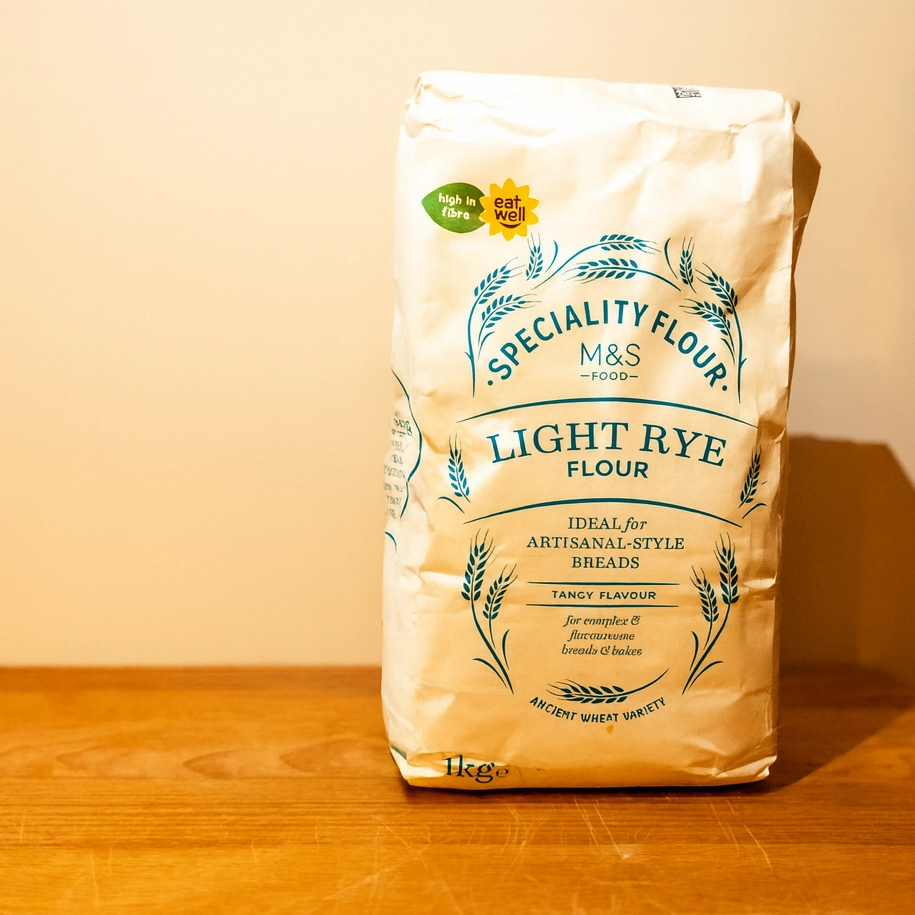
- Share
- Leave a review
- Bookmark
- prev
- next
Sourdough Categories
Technique
Light Rye Flour
Milling rye grain with the bran and germ largely removed produces light rye flour, which is primarily composed of the starchy endosperm.
This results in a flour that is lighter in colour, with lower protein and fibre content compared to whole rye flour. A mild rye flavour characterises light rye flour and is often used to make lighter rye breads with a soft crumb.
Composition-wise, light rye flour contains mainly starch from the endosperm, with less protein and fibre, as the milling process removes the bran and wheat germ. It typically has a protein content of around 8-10.5%, moderate carbohydrates, and dietary fibre of around 12% depending on the exact milling and extraction process.
The removal of bran and germ gives it a lighter colour and less dense texture compared to medium or dark rye flours.
In summary:
- Made from the central part (endosperm) of the rye grain
- Bran and germ removed, yielding a lighter colour and texture
- Lower protein and fibre than whole or darker rye flours
- Used for light rye breads with a milder flavour and a lighter crumb
- Composition mainly starch, moderate protein (~8-10%), and some fibre (~12%).
- This milling approach contrasts with medium- or dark-coloured rye flours, which retain more bran and germ, resulting in darker, denser, and more flavorful breads.
FAQs
What is light rye flour?
Milling rye grain with most of the bran and germ removed makes light rye flour, leaving mainly the starchy endosperm. Light rye flour appears lighter in colour and milder in flavour than darker rye flours and produces lighter, softer rye breads.
How does light rye flour differ from whole rye or dark rye flour?
Light rye flour has less bran and germ than whole or dark rye flour, making it less dense, lower in fibre and protein, and milder in flavour. Whole or dark rye contains more bran and germ, producing a stronger rye flavour, a darker colour, and a denser texture.
What are the common uses of light rye flour?
Bakers use light rye flour for baking lighter rye breads, cakes, muffins, and pastries, where they want a mild rye flavour and a softer crumb. Bakers often mix it with wheat flour to achieve a better rise and texture.
Does light rye flour contain gluten?
Yes, rye flour contains gluten, but in a different form than wheat. It has less gluten and it is less elastic, which leads to denser breads that do not rise as much as wheat breads.
Is light rye flour healthy?
Rye flour is rich in fibre, vitamins, and minerals like potassium and manganese, making it a healthier alternative to white flour. Light rye flour has less fibre than whole rye but is still nutritious.
Can I use light rye flour as a 100% replacement for wheat flour in baking?
Using 100% rye flour, including light rye, often results in dense, heavy bread due to its lower gluten content. It is best to blend light rye flour with wheat flour or use rye-specific baking techniques for better rise and texture.
What does light rye flour taste like?
It has a mild rye flavour, less intense than whole or dark rye, with subtle notes of nuttiness, earthiness, and a slightly fruity character.

Add a review